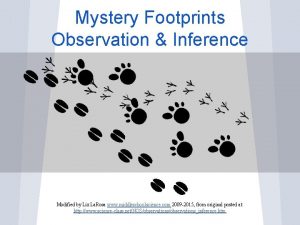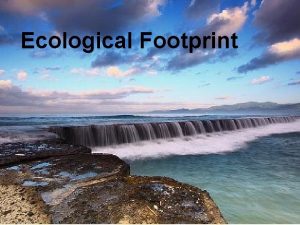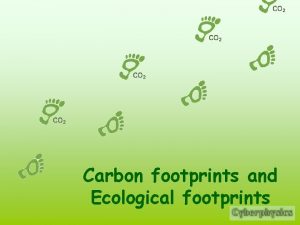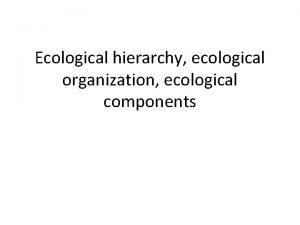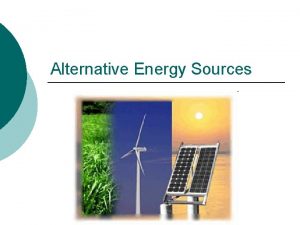UPCOMING DATES Ecological Footprints Topic 6 Energy Sources








- Slides: 8

UPCOMING DATES

Ecological Footprints Topic 6 – Energy Sources A. S: E – H

Are we running out of space?

If not space, then what are we running out of? Natural Resources!

Ecological Footprint • The amount of land water resources used and land needed for waste assimilation person in order to sustain their lifestyle/standard of living. – It measures a person’s demand on the bio-capacity of the Earth. (Bio capacity = Amount of a given area to generate supply of renewable resources and absorb carbon emissions) – Carbon Footprint is only a portion of your EF. • What factors make up your ecological footprint? Where we live, food we eat, the energy we use, the amount of water we use, the trash we make and how it is managed.


Did you know that the average ecological footprint of: • The U. S. is 8. 1 hectares (20 acres) person… • An LEDC is 1. 8 ha (4. 5 ac) person… – The world’s average is 2. 7 ha (6. 7 ac) person • However, the planet only has a bio-capacity of about 1. 5 ha (3. 7 ac) of productive land person. – We are already in a bio-capacity deficit! – Is this sustainable? – If our ecological footprints are so large, how is it that 7 billion people are able to live on the planet right now? WE TRADE – goods, services, energy, money!

Footprints around the world • Why is average footprint for the developing world (LEDC) so low? • They use less : & produce less: • What are the implications of an LEDC raising their ecological footprint to that of an MEDC like the U. S. ?
 Print and web sources
Print and web sources Imp of water resources
Imp of water resources Floor footprints visual management
Floor footprints visual management Mystery footprints observation and inference answer key
Mystery footprints observation and inference answer key Take only photographs leave only footprints
Take only photographs leave only footprints Cai guo qiang footprints of history
Cai guo qiang footprints of history Floor footprints visual management
Floor footprints visual management Which is not a class characteristic of a suspect's sneaker?
Which is not a class characteristic of a suspect's sneaker? Examples of clinchers
Examples of clinchers



